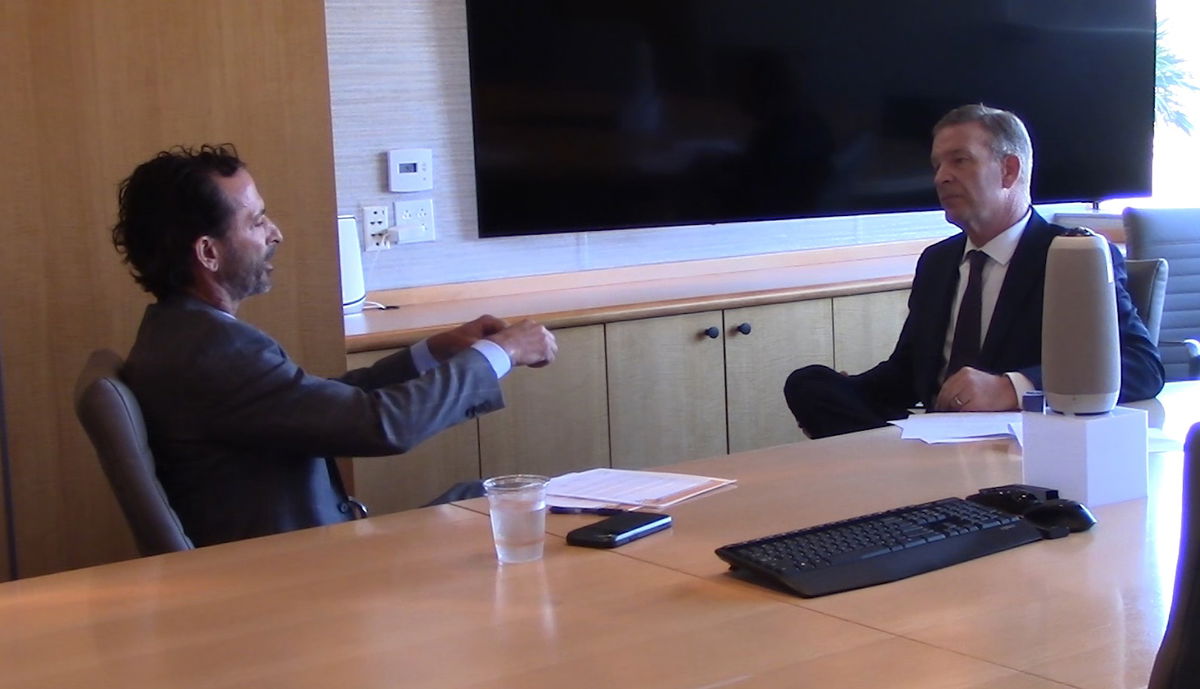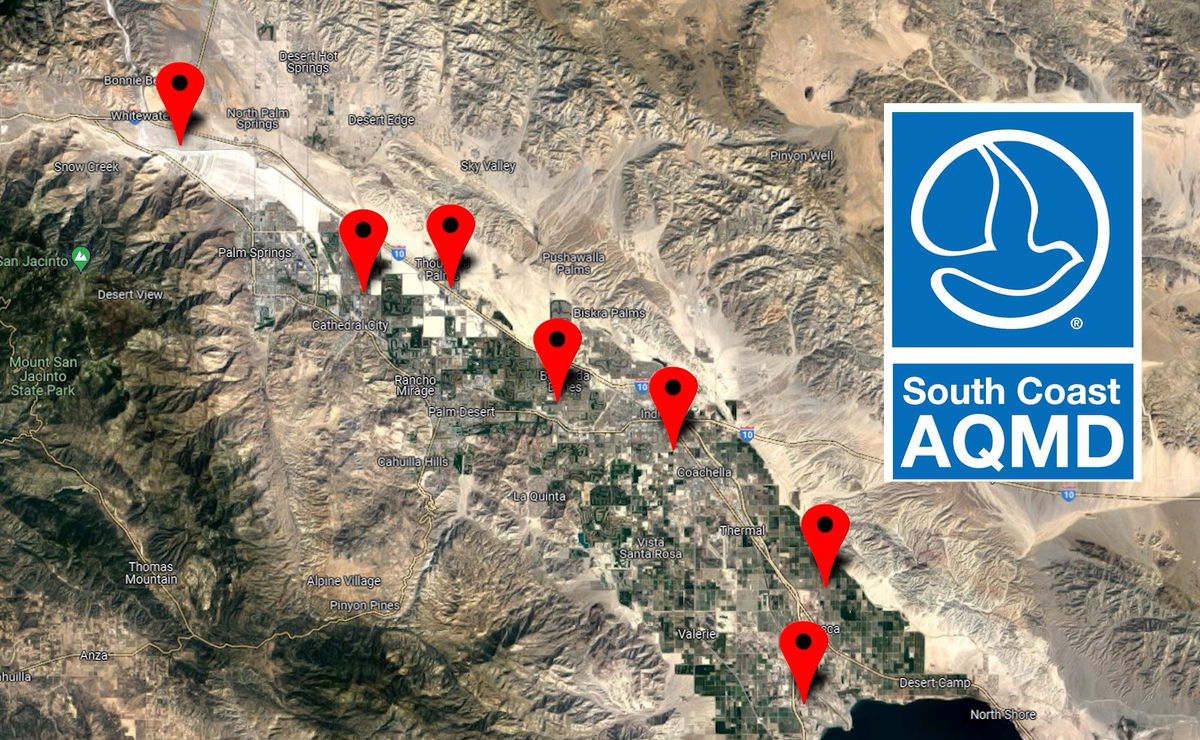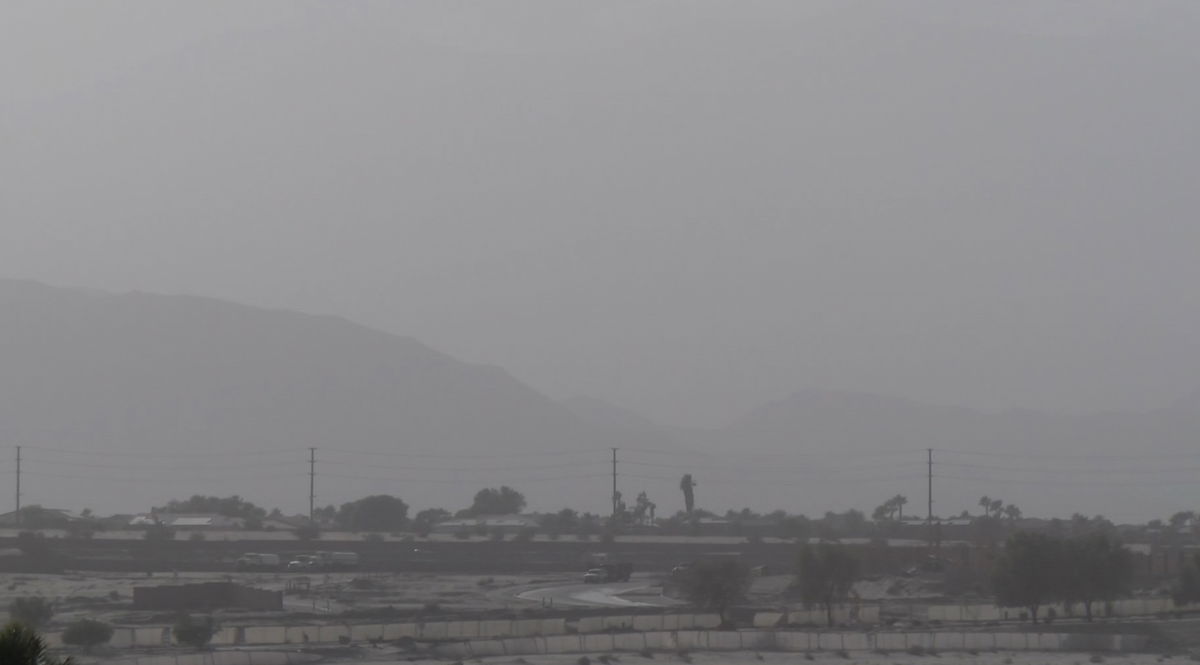Local leaders say valley’s post-Hilary air quality concerns require study and outside help to identify solutions
Local leaders say the Coachella Valley is dealing with a new type of air quality concern following Tropical Storm Hilary that devastated areas of the desert a year ago on August 20, 2023.
Riverside County 4th District Supervisor V. Manuel Perez said, "This issue is larger than just AQMD. I need people to understand this."
Perez is the Coachella Valley's South Coast Air Quality Management District representative, serving on its South Coast AQMD Governing Board, and not the only local leader concerned about the number of dust storms and other generally dusty days around the valley following Hilary.
“This valley was choked with air quality problems," said Coachella Valley Association of Government’s Tom Kirk who added, "It was very different from past years.”

Jeff Stahl met with Kirk who is heading regional efforts to improve our air quality concerns. He says everyone in the Coachella Valley now agrees our air has worsened post-Hilary.
“We all agree," Kirk said adding, "The air district doesn’t."
An SCAQMD representative provided News Channel 3 with a statement saying, "According to our monitoring data, levels of PM10 in the Coachella Valley are consistent with what we’ve observed prior to Tropical Storm Hilary."
50 local leaders signed a June letter urgently requesting the South Coast Air Quality Management District take immediate steps to better identify dust sources and create a plan to address them.
“They may be looking at things one way, but trust me," Kirk said, "our eyes and lungs are seeing it very differently.”
Kirk said if not addressed, our frequent dust storms and dust-filled days pose a potential threat to our health and the area's economic future.
In our I-Team report Dangerous Dust, Jeff Stahl showed how blown dust in the air with a diameter of 10 microns or less (PM10) can cause heart and lung problems and has been connected to locally higher emergency room visits and deaths.
John White's The Power of Water I-Team investigation revealed last September that the August storm carried huge amounts of mud into the Whitewater wash. A lot of that mud settled in the low area between Indian Canyon Drive and Gene Autry Trail. It's one of the windiest areas in the world.
Wind farm developer Mikael Jakobsson is an expert in wind turbine installations and technology and has worked with wind farms around the Banning Pass.
Jakobsson says he believes channeling the Whitewater River could be a long-term fix to our blowing dust problem by limiting where the dust-carrying mud flows.
“You can control it and lead it away from that windy area," Jakobsson said adding, "I think that would allow us to not be exposed to the big dust problem.”

Jakobsson describes a 13-and-a-half-mile-long channel that would run from Whitewater Canyon south and to the east to Ramon Road where it narrows to its current design.
I shared that idea with Kirk who said that, at least in this storm, Jakobsson's idea would not have helped.
“All this mud is from the north crossing the freeway from Mission Creek," Kirk said showing how it was deposited in the wash area between Indian Canyon Drive and Palm Drive-Gene Autry.
Kirk says SCAQMD has done some work in expanding its network of air quality monitors around the desert but wants more done to address the look of dust in our air all the time-- suspended particles that are creating a haze even when it's not windy.

An SCAQMD representative provided News Channel 3 with a statement saying, "South Coast AQMD has three air monitors in the Coachella Valley that are used to monitor air pollution continuously."
“They have close to 500 people that focus on air quality every day," Kirk said adding, "We don’t have any in the Coachella Valley."
"South Coast AQMD has many employees that live in the Coachella Valley," SCAQMD spokesman Nahal Mogharabi said.
Agreeing with the air management district, Perez says the source of our new air quality concerns is not what we've traditionally seen and isn't yet known.
"It could be PM10, PM15, PM 20," Perez said adding, "We don't know that yet. So that will require folks at a federal level as well as state level to help identify, 'what is that?'"
Perez says a new effort will require both state and federal agencies to get involved along with funding for studies and aid. He says he aims to determine what's in the air because there has never been local testing for total suspended particulate matter.
SQAQMD's statement from Mogharabi also said, "South Coast AQMD is committed to doing what it can to address the concerns expressed by community members. To that end, we’ve deployed additional monitors, and are evaluating satellite data in collaboration with experts in academia to understand what community members are observing. We are also reaching out to state and federal agencies that have expertise in desert environments to assist in identifying potential solutions."
The supervisor and CVAG are organizing a September 12 meeting he's hoping will also involve representatives from SQAQMD, the California Air Resources Board, and the Environmental Protection Agency.
Meanwhile, CVAG is working again with Caltrans and other agencies to reassess and reapply ground cover to exposed dusty areas ahead of our fall winds.

Covering wash areas, however, poses jurisdictional issues and environmental concerns. Kirk says they’re still working through those and is optimistic they will be addressed.
See our upcoming News Channel 3 special Hilary Aftermath: One Year Later airing Tuesday, August 20 at 6:30 p.m. on KESQ and stay with KESQ News Channel 3 for continuing coverage of air quality concerns and other post-Hilary issues impacting the Coachella Valley.




